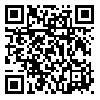BibTeX | RIS | EndNote | Medlars | ProCite | Reference Manager | RefWorks
Send citation to:
URL: http://jhygiene.muq.ac.ir/article-1-118-en.html

 , Mohammad Javad Mohammadi2
, Mohammad Javad Mohammadi2 
 , Ahmad Reza Yari3
, Ahmad Reza Yari3 
 , Mehdi Vosoughi *
, Mehdi Vosoughi * 
 4, Majid Farhadi5
4, Majid Farhadi5 
 , Soghra Badri5
, Soghra Badri5 
 , Monavar Daneshpajoh5
, Monavar Daneshpajoh5 

2- Abadan School of Medical Sciences, Abadan, Iran
3- Research Center for Environmental Pollutants, Qom University of Medical Sciences, Qom, Iran.
4- Student Research Committee, Environmental Technologies Research Center, Department of Environmental Health Engineering, School of Health, Ahvaz Jundishapur University of Medical Sciences, Ahvaz, Iran.
5- Ahvaz Jundishapur University of Medical Sciences
|
Background & Aims of the Study: Vegetables are useful for humans as they contain minerals, vitamins, fiber and other nutrients. Eating raw vegetables are a nutritional habit in Iranian families. Raw eating vegetables is the main source of parasitic infections. The aim of this study was to determine microbial contamination of raw vegetables in Ahvaz, Iran during 2014-2015. Materials and Methods: In this study, 20 samples collected from markets of Ahvaz. Average weight of collecting raw vegetables was 1 to 2 kilograms. Then, raw vegetables were washed by 4 to 5 liter tap water. For parasitic ova washed water leaved for 24 hours for sedimentation and then the supernatant poured and about 50 to 100 milliliter of settled water transferred to 15 ml centrifugal tubes. After centrifugation, pellet floated and finally parasitic ova were observed microscopically (corrected Bailenger method). The multiple tube method used for Coliform bacteria (Total & Faecal) examination. Results: Maximum Coliform bacteria was in Kootabdullah samples (total Coliform was 25893319.52 MPN/100ml and Fecal Coliform was 15054572.83 MPN/100ml). Maximum Ascaris ova in Hamidieh was 43.3 per liter and Sheiban 36.66 per litter. Conclusion: Microbial contamination of raw vegetables, especially in Kootabdullah, possibly was due to Karoon river water pollution by sewage discharge of Ahvaz city, and also in Hamidieh possibly due to Karkheh river water pollution by sewage discharge of Hamidieh city. Thus, sewage treatment of these cities before discharging in rivers is necessary. |
Received: 2016/03/4 | Accepted: 2016/06/25 | Published: 2016/07/14
| Rights and permissions | |
 |
This work is licensed under a Creative Commons Attribution-NonCommercial 4.0 International License. |





